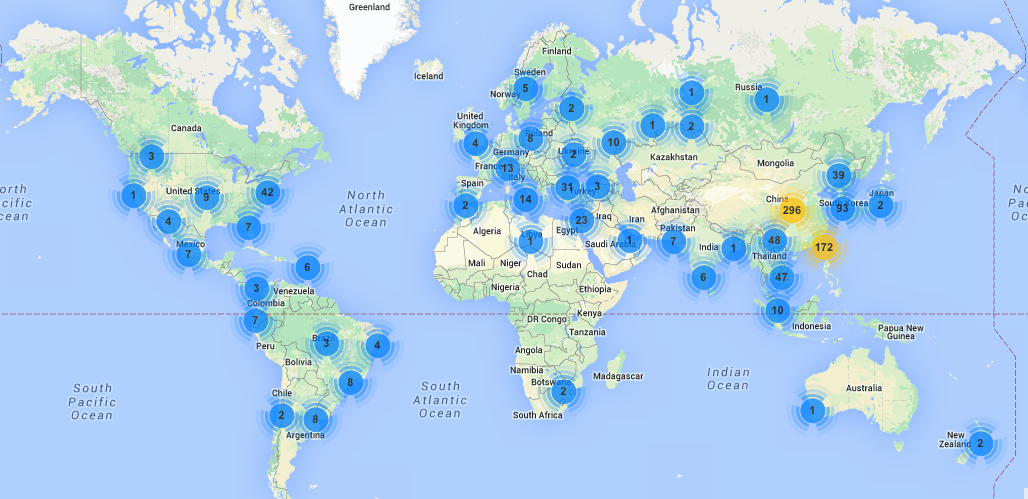Around a year ago, (I know, it is hard to believe it has been a year), I started a quick and informal meet up group in Columbus, called #CMHSecLunch. The idea was simple:
- Re-Create the “Hallway Con” effect on a monthly basis.
In this scenario, the Hallway Con is the best part of security events. It’s the one where you see old friends, make new ones and have great, warm and personal connections with them. I believe this is the core of why security events and conferences are so valuable. Beyond the skills training, marketing hype and presentations ~ the value of friendship, camaraderie and personal relationships remain.
Thus, I thought, what better way to encourage that part, than organizing events that focus on those goals. And thus, #CMHSecLunch was born. We have been meeting on the second Monday of each month at a rotating mall food court around the city. Response has been great! Sometimes there are a few of us (4 has been the smallest) and sometimes many of us (around 20 have been the largest meetings). But, people have gotten new jobs, found solutions to difficult security problems, met some new friends and saw people they missed.
Overall, it has been fun, entertaining and worthwhile.
We will be continuing the process into 2014 and here are at least three reasons I believe this approach and the #CMHSecLunch events are worth doing:
- I have gotten to see people connect, smile and re-unite for a quick bite of food, some laughs and great conversation. Since I am often referred to as the “Hippy Hacker”, you have to know that this alone makes me happy and makes me believe that the events are worthwhile. Whenever we connect with another and share with the community, good things happen!
- New threats have been discussed that brought to light attacker motives, techniques and the width of their activity. If we don’t have lunch and discuss what we are seeing, then the bad guys win. They win even less, if we also have coffee and dessert afterwards. Nuff said! 🙂
- New projects have originated from the #CMHSecLunch discussions. In fact, several new projects. People have aligned, worked out some of their ideas and started working together to build talks, mathematical models, risk documents and various other useful tools. When a bunch of smart people eat and play together, often the outcome is stuff that helps all of us. So, being the origin of projects and stuff that helps the community is a fantastic thing.
Why haven’t you attended (again)? 🙂
If I still haven’t persuaded you to check out the next #CMHSecLunch, (which you can find by clicking here), how about these quotes from people who have attended the event?
@TSGouge: Interaction with real live human beings, no screens involved! Food, jokes (that only another geek would get), getting my butt out of the office chair, and dialogue more rich than any conference or lecture…these are people who will now reach out and collaborate on problems or projects. To sum it all up: connections with people who get it.
@Cahnee: CMHSecLunch is a great way to get away from the craziness of work and spend time with infosec peers to talk about whats on everyones mind. We talk about current events and what each of us see as challenges facing us both professionally and personaly from an infosec perspectice. Talk about encryption, mobile devices, NSA, DOD, etc.
@gisobiz: CMHSecLunch is a great thing! You meet with the like-minded people, or like-minded people wannabes and enjoy the food (great or not), but most importantly, the awesome conversation. You will get to know better people you already know, or make new friends. Talking in an informal friendly environment takes the pressure off “being right” or “saying the right thing” which one encounters in a professional environment. Nobody will laugh at you or criticize you; in fact everyone is interested in your fresh (or stale) perspective on InfoSec or current events related to cyber security or anything else you care to share. And the really best thing is you get to learn from your colleagues, something you may not have an opportunity to learn otherwise. It is like a miniature “geek” party in the best sense of the word. Or if you like – a mini-Black Hat conference. With food.
So, come on out next month and support the community. Have fun, grab a bite and engage with us, we are waiting for the view and insight that ONLY YOU can provide. Join us!



